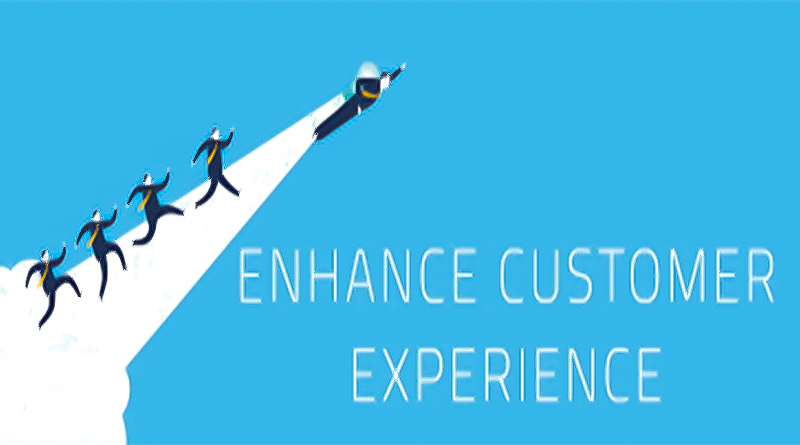Savvy Tips to Enhance Customer Experience
Retailers are constantly looking for innovative solutions to improve the customer experience.
In a world where consumers are increasingly demanding more from businesses, the survival of businesses, regardless of their industry, depends on their ability to deliver an above-average customer experience.
In the age of technology, woocommerce plugins or woocommerce shop as customer plugins are leading us towards the digitalization of sales outlets and changing consumption patterns.
Here are some tips for companies wishing to offer their customers an exclusive experience and to capitalize on this asset to continue their development…
Redefining customer support processes
In the age of social media, a company’s reputation – and thus its sales – can be at the expense of a consumer’s discontent before customer service gets wind of any problems.
In order to maintain good relations with its customers, any company must have pro-active processes that will allow it to maintain a close relationship with them and respond to their requests.
They need to redefine their support processes in order to better anticipate contingencies, whether it is to stem a potential crisis by responding very quickly on social networks or to identify areas for improvement on a range of products. It has also become essential to link predictive and prescriptive analysis tools to service and support processes.
Contact a professional to implement the project
Because many consumers are still attached to the physical shops, the trader must at all costs bend over backwards to highlight his products. This is why it is important to digitalize your sales outlets and to use the advice of a pro.
The visual is essential to capture the attention of customers and lead them to the act of purchase. The expert will study the project and propose the digital distribution solution adapted to the company’s activity. For example, it will be able to manage the LCD display from the website in an intuitive and direct way.
With this option, you can instantly communicate and broadcast messages to a single store or to the entire network.
The visual solution will allow the contractor to design a memorable identity for all clients. According to its needs, the company can choose to program the visual loops in advance from the platform of the provider of its choice, of course.
The use of LED lights, advertising stops, holograms is also effective in attracting consumer attention. Other senses, such as hearing or taste, can also be used to optimize points of sale in an original way.
Create a multi-channel experience, but allow customers to move from one to the other without problems
Customers are now in the habit of communicating with businesses through a variety of channels such as telephone, social media, instant messaging or emails, and expect businesses to provide the same service through all of these channels.
Although the integration of various processes and technologies may be more complex than it seems, it is well worth the effort. And if we have effective tools to analyze the flow of information from customer interactions, then the company can take a huge lead over its competitors.
To make the most of the contacts made on these different communication channels, companies need to have an overview of their customers. It is therefore important that they have a common archiving system, which can be provided by one of the many CRM systems available on the market today or through a multi-channel solution in the cloud.
Develop customized product and support experiences
Customisation of products and services is already a priority for many companies. The exploitation of digital data about people, processes, companies and devices-can speed up the necessary transformation of work processes very much.
Companies should seek to develop harmonized customer data models, which combine information from the internal CRM system with information collected by customer service through its social media activity: the idea is to prepare support scenarios to better anticipate and satisfy customer needs.
At a time when products are becoming more and more personalized, customer service must learn to make good use of digital techniques and tools in order to offer tailor-made assistance. This includes the use of highly qualified client advisors who are able to defend the client’s interests but also to guide the client.
The importance of surprising the customer
Measuring the business value of customer contacts through social media is not easy. To be sure, one can get a fairly accurate picture of the performance of customer service using quantitative indicators, starting with the total number of requests handled and the resulting customer satisfaction rate.
Beyond that, clients crave strong moments, unexpected interactions, that give them the feeling of being privileged.
Customer service must therefore plan these moments as carefully as it does with the analysis of quantitative indicators. Because these delicate attentions mark the customers even more durably.
Make customer support a listening post
Since it allows both the advisor and the client to exchange on a one-to-one basis, customer support is a prime lever for gathering the client’s feelings on products, services and processes. Also, as long as advisors are properly trained to capture strategic information and to inquire about customer satisfaction when processing their requests, customer support can become an invaluable listening post.
To make customer support a generator of ideas and feedback, it is important to rethink this function from a reactive model to an interactive approach.
To achieve this, enterprises must first identify the functional, operational and cultural changes to be promoted in order to create a more interactive assistance. Second, they need to focus on identifying the underlying mechanisms and technologies that need to be deployed in order to be more responsive to the client.
Valuing frontline employees
Any company that wants to give its customers a positive and memorable experience must first ensure the satisfaction of its employees. To do this, employers need to think not only about measures that can give their teams more autonomy and flexibility, but also to rethink their performance rating scale in order to value those without whom customer support would be nothing.
It may therefore be appropriate to record the “high points” in each employee’s rating grid and to take them into account when awarding the super formance bonuses.
While companies need to use digital technologies and strategies to make customer service a front office function, they also need to learn to look beyond quantitative indicators and develop the right strategy to create, propose and value spontaneous and personalized customer moments.
Using olfactory diffusers to improve the point-of-sale experience
The establishment of olfactory diffusers in its business is effective in perfecting the sensory identity of the sign.
These devices are particularly effective in so far as companies that know how to use them do not limit themselves to a simple odor diffuser in the premises. Indeed, it must be said that the smell is a true simulator of memory. It is enough for a customer to smell a particular perfume to remember a product or a need that has already been forgotten.
And so, in order to stand out from the competition and improve the customer experience, it is important to choose personalized or diversified fragrances.
To arouse particular emotions, it is better to reveal the essence of the brand. Thus, the characteristics of the point of sale will have to be studied in order to select the appropriate odour. As always, the goal is to increase brand retention and stand out from competitors.
It is important to note that some lingering odours can act as a brake on business activity. They can also be a bad perception of the store by the customer. For this reason, it is necessary to remove the bad odours with fragrances corresponding to the particularities of the place of diffusion.
Customer Culture must emanate and be driven by the General Management
Employees alone cannot decree such a cultural shift. It is management who must define satisfaction as a priority, and make it an indicator that is monitored as much as turnover.
Otherwise, the company risks going back to the usual ” Yes, we must satisfy the customer. But the priority is to make sales in the quarter “.
We must therefore think business, but also customer otherwise the customer experience will remain only a beautiful theory and will never be 100% implemented.
On the other hand, a customer culture is acquired when those responsible for the experience are invited to meetings to make the customer’s voice heard (they are asked for their opinion, we think of the customers during the initial design…), and when the employees know that they will have done their job well if the customer is happy at the end.
In order to implement this customer Culture, it is necessary to centralise the customer relationship in the broad sense in a single direction.
This is why there are more and more appointments of Customer Experience Managers, Customer Experience Managers and customer experience managers.…
These customer experience managers are there to break down silos and centralize the customer relationship in the same direction.
This person will oversee the activity of the call center, the campaigns on the park… to verify that all the forces of the company are aligned with a goal : satisfy the customer (and earn money !).La culture client est incarnée et réalisée par les collaborateurs, pas par des Powerpoint
To make the Customer Experience Program a reality, it is not enough to make slides, to appoint directors. Customer culture needs to be embraced by all employees.
Because it is they who are in direct contact with prospects and customers, and who will therefore bring the customer experience to life.
It starts with information and training employees on the importance of customer satisfaction, its ROI.
It’s also about showing it and proving it. For example, success stories show that you can do small things at your level and that will have big impacts. For example, it means setting up a catalog of commercial gestures for advisors.
This initiative ensures that employees become part of the customer experience and are at the same time revalued.
In terms of recruitment, it is the same thing: you no longer have to try to save on costs and cut down on your customer service. We need to recruit the right “empathetic” Profiles with a client orientation.
Managing dissatisfaction
There is nothing worse than a person who complains that he thinks he is right and does not get an answer from the company.
It is, therefore, crucial to deal with the discontented as a matter of priority, what is called the ultra-detractors (the very discontented people who give a score between 0 and 1 out of 10 or 5). They are people who are ready to leave the company and will make a negative word of mouth.
On the other hand, you have the ultra promoters who give the highest ratings (ex: 4 or 5 out of 5), who are your fans and your promoters, and to whom you can ask to publish a testimonial, to make a recommendation, to propose a sponsorship… and which you must therefore pamper.
What indicators should be used to measure client satisfaction?
The Net promoter Score (NPS): measures “word of mouth “, and the recommendation power of your brand. This is a score of 0 to 10 against the company’s recommendation to its relations.
The CSAT (Customer satisfaction): allows you to measure the answer to the expectations of the customer regarding your products. This is a score of 1 to 5 or 1 to 10 for the question “Are you satisfied with your product or service? »
The CES (Customer Effort Score): it measures the effort made by the customer to achieve an action (buy a product….). For example, several points can be measured: did the shop go well / did the order go well / did the product installation go well / … with a score of 1 to 5.
The CXi (Customer Experience Index): it proposes three questions: satisfaction with the use of the product, the response to the expectations of the product, and word of mouth following its experience.
These 4 indicators make it possible to simply measure the customer experience and thus act to optimize it. Since these numbers are only useful with an Associated comment (the verbatim). You should always let the client express himself through the verbatim (the commentaries) to get the explanation of the note.
The survey note gives the client’s opinion, and the verbatim report gives the explanation.
Tools to optimize the customer experience
The customer experience goes through a culture based on customer satisfaction, but also through tools to streamline the customer relationship.
For example:
- Implement a call center solution (queuing, overflow, automatic switchboard)…) ;
- Provide basic grammar and spelling training for people in written contact with clients ;
- Use message templates (form and background) and a knowledge base ;
- Use “classic” chat and chatbots to exchange life or in an automated and scripted way.
It should also be remembered that the current trend is towards self-service: clients want to manage themselves first and foremost through an external knowledge base. And better yet, think up your products right from the start for a seamless and seamless customer experience.
In conclusion
Improving the customer experience is no longer an option, whether you are a small brand or a large company. The Customer Experience will allow you to defend your price and build a superior image to your competitors.



